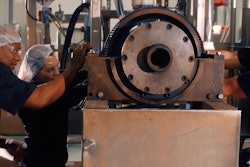Real-time machine monitoring and corresponding alerts are critical for maintaining the performance and security of today’s complex manufacturing operations, however given the massive amounts of data machines are continually producing, a serious problem can occur: alert fatigue.
Alert fatigue can cause serious operational problems to go unnoticed and even have a negative effect on workforce morale. For instance, overwhelmed IT teams can experience significant anxiety and stress, and as a result, lose interest in solving problems or helping colleagues. To make matters worse, in an attempt to keep up with a near-constant inundation of data, manufacturers and their IT teams can become so desensitized to critical issues that they start accepting errors as normal.
Some manufacturers are turning to automated, all-in-one monitoring solutions to try to keep up with escalating alert activity, however these solutions can’t guarantee complete accuracy and they fail to promote a further understanding of the intelligence that exists within machine alert data. To successfully combat alert fatigue and prevent any resulting instances of costly downtime, manufacturers should consider the following five best practices:
1. Ensure Alerts Are Actionable
One of the best ways to guarantee alert fatigue is to allow alerts to endlessly stream in without any context or actionable information. Make sure all alerts include context that comes from pairing data points across the entire manufacturing system, including machinery logs, operator notes, and any other details relevant to resolving the issue. Also, make sure all alerts indicate where the issue originated and any other areas of the system that were impacted so the root of the problem can be fixed.
2. Classify The Severity Of All Alerts
Traditionally, alerts only have a few classifications, such as “Warning,” “Severe” or “Notice.” However these categories ignore the true impact that can arise as a result of an alert. By leveraging existing alert data in conjunction with any correlated machine downtime, manufacturers can create a more detailed classification system that enables them to more effectively measure the severity of any given alert.
3. Align Operations And IT Teams
Too often, on-the-ground operations teams are kept at a distance from data science or IT teams. Since it’s not necessarily true that technical teams know everything, though, it’s important that these two groups work together closely to pinpoint which alerts and alert classifications matter most, taking into account the specific needs and unique goals of the business.
4. Adjust Alert Thresholds
Chances are, the statuses or events that were being tracked months ago may not be as high of a priority today. Manufacturers should continually evaluate and adjust how and what they’re monitoring, and eliminate any old or noisy detection thresholds to make sure the most relevant alerts never go unnoticed.
5. Leverage Predictive Maintenance
For manufacturers who’ve been collecting machine alert data for years, there’s an incredibly valuable opportunity in using that data to build predictive maintenance models. In other words, by tapping into existing alert data, manufacturers can move away from conducting routine, scheduled machine repairs and instead use alert data intelligence to anticipate if/when machine fixes or upgrades are needed.
No matter a manufacturer’s size or specific vertical, it’s paramount that they have constant visibility into the effectiveness of their alert set-up. In doing so, they can improve critical monitoring processes over time, identify current bottlenecks and single out any repeating issues. Furthermore, by continually referencing the intelligence within their existing alert data, manufacturers can significantly improve their operational efficiency and employee productivity, even as they scale as an organization
Rohit Gupta is the co-founder and CEO of Sentenai.























